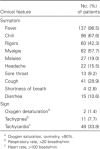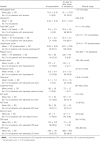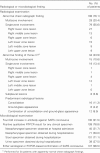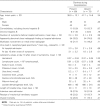Viral replication in the nasopharynx is associated with diarrhea in patients with severe acute respiratory syndrome
- PMID: 14765337
- PMCID: PMC7107995
- DOI: 10.1086/382681
Viral replication in the nasopharynx is associated with diarrhea in patients with severe acute respiratory syndrome
Abstract
The role of severe acute respiratory syndrome (SARS) coronavirus as an enteric pathogen was investigated in a cohort of 142 patients with SARS who were treated with a standard treatment protocol. Data from daily hematological, biochemical, radiological, and microbiological investigations were prospectively collected, and the correlation of these findings with diarrhea was retrospectively analyzed. Sixty-nine patients (48.6%) developed diarrhea at a mean (+/- standard deviation [SD]) of 7.6+/-2.6 days after the onset of symptoms. The diarrhea was most severe at a mean (+/-SD) of 8.8+/-2.4 days after onset, with a maximum frequency of 24 episodes per day (median, 5 episodes; range, 3-24 episodes). A higher mean virus load in nasopharyngeal specimens obtained on day 10 after the onset of symptoms was significantly associated with the occurrence of diarrhea (3.1 log10 vs. 1.8 log10 copies/mL; P=.01) and mortality (6.2 vs. 1.7 log10 copies/mL; P<.01). However, diarrhea was not associated with mortality. The lung and the gastrointestinal tract may react differently to SARS coronavirus infection. Additional investigation of the role of SARS coronavirus in the pathogenesis of diarrhea in patients with SARS should be conducted.
Figures






References
-
- World Health Organization . Summary table of SARS cases by country, 1 November 2002–7 August 2003. 23 September. 2003. Available at: http://www.who.int/csr/sars/country/en/country2003_08_15.pdf.
-
- Ksiazek TG, Erdman D, Goldsmith CS, et al. A novel coronavirus associated with severe acute respiratory syndrome. N Engl J Med. 2003;348:1953–66. - PubMed
-
- Drosten C, Gunther S, Preiser W, et al. Identification of a novel coronavirus in patients with severe acute respiratory syndrome. N Engl J Med. 2003;348:1967–76. - PubMed
MeSH terms
LinkOut - more resources
Full Text Sources
Medical
Miscellaneous

